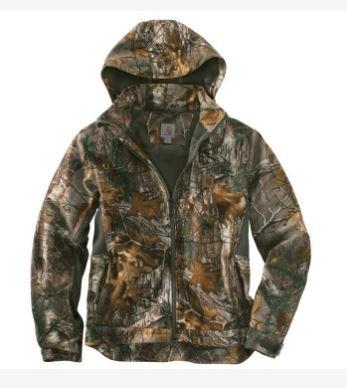Everything You Need to Know About Autumn Flocks
After the long summer of waiting, it's finally fall. Orange, red and yellow leaves shimmer in the autumn morning sunlight. Crisp air revitalizes us after months of steaming days; reason enough to be out in the painted woods.
For some of us, the shifting seasons mean one thing: fall turkey hunting. Some 42 states offer opportunities around the country, and even some Canadian provinces. Check your lawbook.
Scatter and Call Back
Scatter? Say what? To the uninitiated, it doesn't make sense. Why would you separate turkeys in a big group when they're so close?
For one, they might just be out of range. Put your gun or bow down, and run toward them. Better yet, where legal, use your turkey dog to separate them.
As strategies go, there are two primary fall turkey hunting approaches: you can passively wait for patterned wild turkeys to show up in range. Do so either on the ground, in a blind, or from a treestand, or find a flock, and as mentioned, attempt to scatter them on foot.
Patterning turkeys to see where they roost and feed can put you in range. Also relying on the fact flocked turkeys want to be together, you can scatter birds then set up to call them in to your position.
In the latter scenario, separated birds want to regroup — especially autumn family flocks. Yes, it seems contradictory to find then scare groups of turkeys into flight. This relies on the chance you won't be in shooting range, but close enough to rush them on foot, or again, use a trained dog where legal.
Once turkeys are separated, you can set up at the scatter location and try to call them back in to you.
Bonus Tips: 3 Ways to Scatter Fall Turkeys
Fall Turkey Scouting
But how do you find them?
Have you seen a wild turkey lately? Chances are the answer is yes. Opportunities for watching and hunting turkeys have steadily increased thanks to years of wildlife management. Current estimates number the wild turkey at 7 million birds nationwide.
Scouting turkeys is a priority if you want to hunt them effectively. Studying flocks can be both an ongoing pleasure and a practical means of finding turkeys when the seasons are open.
When scouting and hunting, move slowly. Look ahead to glimpse distant flocks (though wary birds may see you first). Also study the ground where they've recently traveled. Finding evidence — tracks, scratchings, molted feathers, roosting and dusting areas, plus droppings — is important to solving the scouting puzzle.
Tracks: Tracks are left in muddy areas where flocks roam, where they move from roosts to feeding zones, along game trails and even creek beds. The middle toes of adult gobblers (often 3 inches or more) are typically longer than a hen's (less than 3 inches). Mixed track sizes in one location indicate a family flock with younger turkeys.
Scratchings: These indicate where turkeys have raked leaves while feeding to expose insects and hard mast such as acorns and beechnuts.
Molted feathers: Feathers show where turkeys have been in late summer and into fall. Indiscriminately scattered feathers under likely roosting trees, paired with excessive droppings beneath branches, reveal a likely roost.
Roosting areas: Turkeys sleep in trees. Roosting areas provide a sense of security. Broad-branched trees such as pines, oaks and maples often hold flocks.
Dusting areas: Wild turkeys sometimes roll in loose soil, belly down, and shake themselves in the dirt, as other birds do. These shallow depressions signal areas flocks use.
Droppings: These leavings are either j-shaped (for male turkeys), or bulbous (for females), though there are exceptions to this standard rule. Unlike spring's bearded bird requirement, in fall hunting, an either-sex turkey is often legal.
In all cases, pay attention to both fragmentary and consistent turkey evidence in a particular area you're scouting and hunting.
Bonus Tips: Scouting for Fall Turkeys
Be Where They Feed
Find food sources. Turkeys will follow.
Your local flocks, like others around the country, rely on high-protein grasshoppers, crickets, and other insects for nutrition. Through summer, as brood hens raise poults (young turkeys), and as gobbler gangs — plus broodless hens — travel with their own sex, flocks often hit open field or edge cover locations daily.
As colder months arrive, fall turkey flocks often transition to spending more time in the woods and along edge cover, feeding on both lingering soft and hard mast such as various berries, beechnuts and acorns.
Over the years I've routinely investigated this birds' crop — or craw, the turkey's thin-walled, sac-like food storage area — to determine what they've been feeding on. The results might amaze some.
Here's a short list of some contents I've found there: grasshoppers, crickets, stinkbugs, worms, frogs, salamanders, alfalfa leaves, beechnuts, other hard mast, small pebbles, pine nuts, miscellaneous tubers, and berries.
Sometimes it seems there's nothing a wild turkey won't eat.
More: Rocky Hunt Maxx Boot
Call Like the Bird You Want
If there's one vocalization rule in fall turkey hunting, it's to call like the bird you want to pull into range. Kee-kee to pull in young birds. Yelp like a gobbler to lure one in. The only exception might be a brood hen set up assembly yelping to her scattered brood. It's hard to beat her at that game.
Of course, as veterans of the game know, there's nothing completely foolproof with turkey hunting.
Sure enough though, wild turkeys call to contact flock members, to vocalize a sense of well-being, and to express alarm at a predator's presence. Roughly 30 call distinctions exist, while less than half of these are applicable as hunting calls. Some hunters tag birds regularly with only clucking and yelping. Others use as many calling vocalizations as possible.
Calling turkeys is an interactive game where the hunter speaks the language of wild birds to coax that quarry into range. As calling fall turkeys goes, imitate their vocalizations by age and sex to evoke a response from the kind of individual bird or flock you want to hunt.
In family groups, young birds of the year respond to kee-kees and kee-kee-runs. Brood hens use assembly calls — a long series of yelps — to gather separated flock members. Adult gobblers and broodless hens (the other two types of fall flocks) communicate with raspy yelps (gobblers), and higher-pitched yelps (hens), as well as clucking.
You can imitate these vocalizations with the mouth and friction turkey calls on the market. Instructions for use are often provided, and time with the turkeys will help you master these tools.
Call softly, or aggressively, situation depending. Wild turkeys call to communicate in the wild, and at times, almost any turkey sound the human hunter makes chances at luring a curious bird in for a look. (Or not.) That's the calling game. You need to interpret what you're hearing from live birds to successfully imitate them.
Even if you don't use the range of available calls, hearing live birds afield can clue you in to what might happen next. It helps you think like a turkey.
Bonus Tips: 3 Ways to Cold Call Fall Turkeys
Kill that Bird Cleanly
Your shotgun should be camouflaged or have a dull finish to avoid detection. It should also deliver a tight pellet pattern at optimum shooting range (20 to 40 yards). With wild turkeys, body shots are out. Aim for the head and neck to drop that bird cleanly. Know your gun and the loads it shoots.
If you hunt with a bow, get the turkey even closer: 10- to 20-yard shots are ideal. Use a blind to conceal your movements. Time your shot on a calm, standing turkey in range. Your arrow's broadhead should be turkey specific for solid flight and serious cutting diameter.
The effort here is to know what your gun or bow will do, and take that turkey cleanly.
Bonus Tips: Shot Placement for Turkey Hunting
Fall Turkeys Taste Great
Okay, you've got a bird in hand. Now what?
Eating wild game and fish, especially wild turkey, is high on my list of living well, and a way to extend the hunt. If possible, I like to utilize as much of the meat as I can, including the breasts and the drumsticks; even the remaining carcass once the legs and thick chest meat are drawn.
As this goes, you can basically use breast meat in any recipe that includes store-bought domestic chicken fillets or farm turkey. It's that simple. Many simply opt to finger the meat, roll it in egg batter then flour, and fry it in cooking oil. That's cool — it's good, and seasonings offer flavor profiles. Wild turkey chili is another great go-to option.
I like to parboil the drumsticks in a tall lobster pot ¾ full of water. After 90 minutes or so, you can remove the legs, cool them, and pick the meat for use in soups and stews. Breast meat and legs now removed, you can do the same thing with the skinned & gutted body of the turkey (snap it into two pieces).
Try it. You might be amazed at how much meat is still available.
Check out these three wild turkey recipes from Michael Pendley's Timber 2 Table:
- Scott's Wild Turkey Soup
- Grilled Wild Turkey and Sausage Skewers
- Cajun-Fried Wild Turkey Biscuits and Gravy Sandwich
Go here for more Realtree turkey hunting.
Follow us on Facebook.
[Editor's note: This Realtree.com feature was first published Sept. 17, 2016.]
Steve Hickoff hunts wild turkeys around the country, spring and fall.










